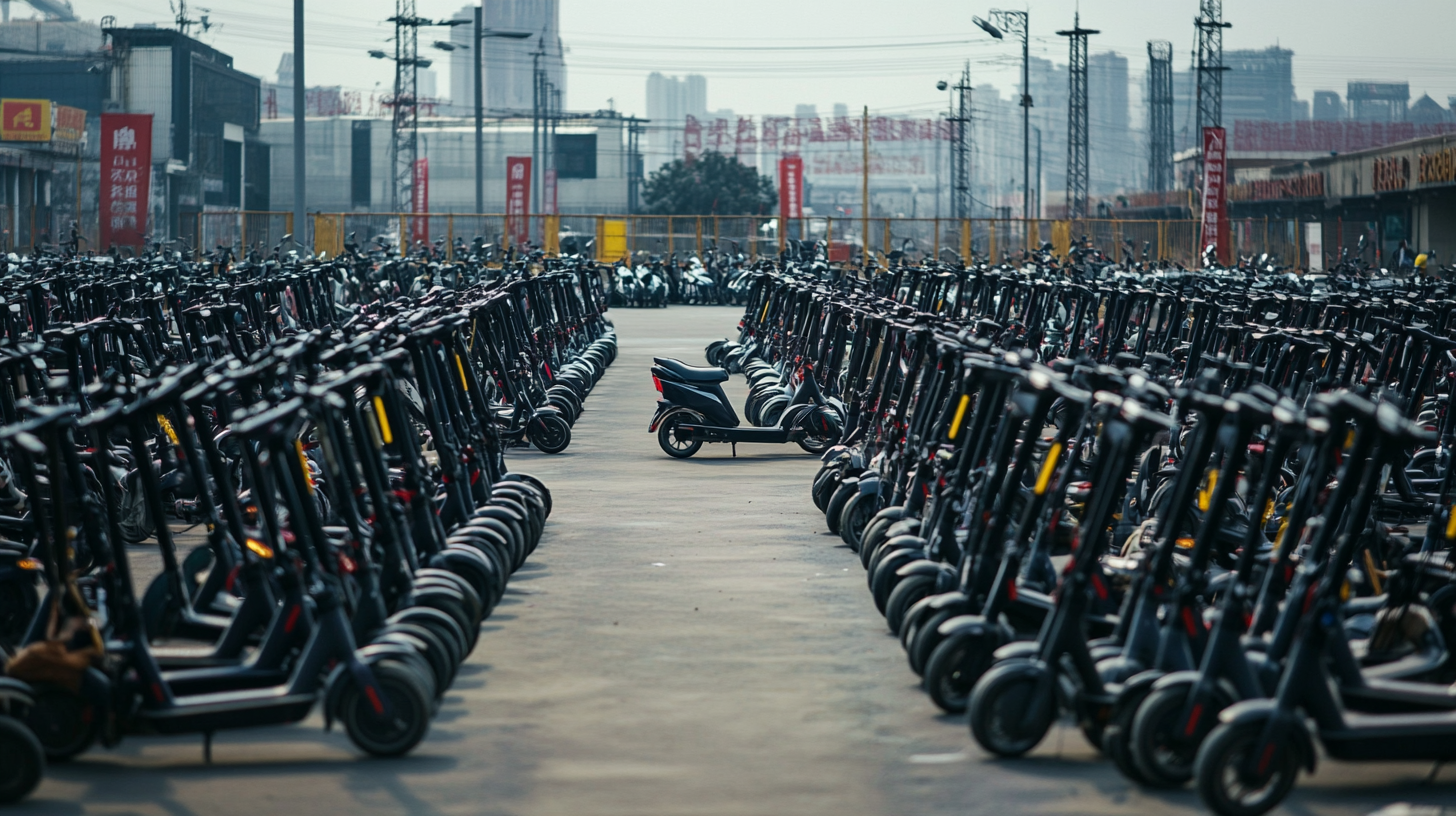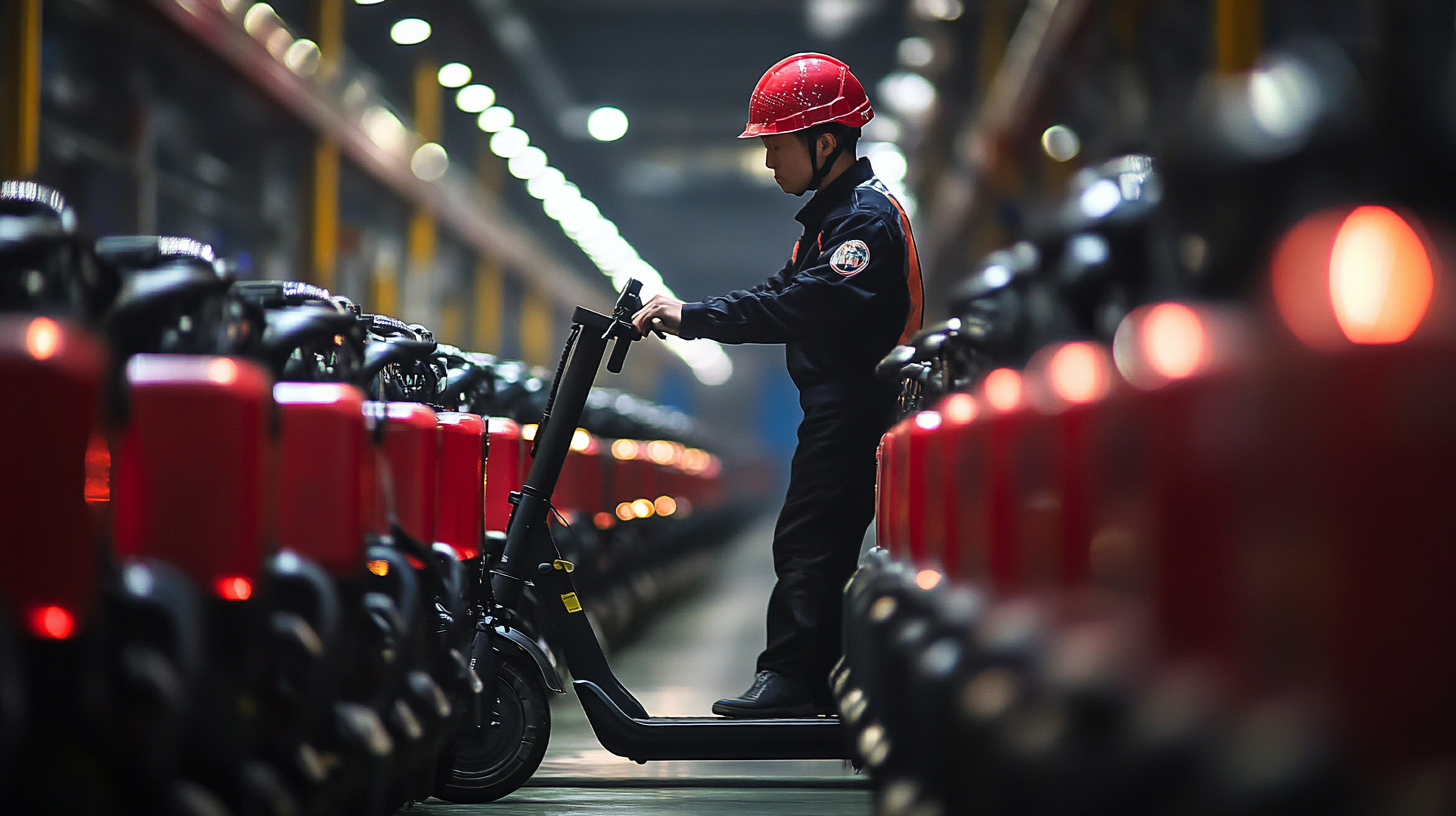In an era marked by escalating trade tensions and reciprocated tariffs between the United States and China, one surprising sector has emerged as a beacon of resilience: the electric scooter battery industry. Despite the challenges posed by tariffs, China's electric scooter battery manufacturers are not only surviving but thriving, leveraging innovation, strategic partnerships, and a growing global demand for sustainable transportation solutions. As urban mobility shifts towards electrification, the importance of high-performance electric scooter batteries is becoming increasingly apparent. This blog explores how Chinese manufacturers are navigating the complexities of international trade while capitalizing on market opportunities, ensuring that their products stand out against a backdrop of economic uncertainty. By focusing on technological advancements and adapting to consumer needs, the electric scooter battery industry in China is positioning itself for a prosperous future, even in the face of adversity.

The electric scooter battery market has undergone significant transformations due to escalating trade tensions and the imposed tariffs on Chinese exports. According to a recent report from ResearchAndMarkets, the global electric scooter battery market is anticipated to grow at a CAGR of 7.9% from 2021 to 2026, reaching a value of approximately $26 billion by 2026. Despite the tariffs levied by various countries aiming to protect local industries, China's electric scooter battery manufacturers have adopted innovative strategies to maintain their competitive edge. For instance, local companies are investing in R&D to enhance battery efficiency and reduce production costs, which helps offset the impact of tariffs.
Moreover, the shift in global supply chains highlighted by Tariff Act changes has forced many companies to reconsider their procurement strategies. A study by BloombergNEF indicates that nearly 30% of electric scooter battery suppliers are diversifying their production locations to mitigate risks associated with tariffs. This pivot not only allows manufacturers to circumvent potential tariffs but also fosters a more resilient supply chain structure that can adapt to ongoing global trade dynamics. While tariffs remain a challenging factor, China's battery industry showcases its ability to thrive through innovation and strategic planning.

China’s electric scooter battery industry has displayed remarkable resilience, thriving despite ongoing trade tensions and tariffs. Manufacturers in this sector have implemented innovative strategies to navigate these challenges, focusing on technological advancements and supply chain diversification. By investing in research and development, they are not only improving battery efficiency and longevity but also creating eco-friendly alternatives that align with global sustainability goals.
**Tip 1: Embrace Collaboration**
Chinese manufacturers are recognizing the importance of partnerships. Collaborating with international firms can foster knowledge exchange and lead to innovations that meet diverse market demands. Strategic alliances can also mitigate risks associated with trade barriers, creating a more robust business model.
**Tip 2: Invest in Local Resources**
To reduce dependency on imported materials, companies are looking inward. By sourcing materials locally, manufacturers can alleviate the impact of tariffs while supporting regional economies. This approach not only enhances supply chain stability but also contributes to cost savings.
These adaptive strategies demonstrate how innovation and resilience are key to thriving amidst adversity, positioning China's electric scooter battery industry for continued growth in a competitive global market.

In the wake of escalating trade tensions, China's electric scooter battery industry has emerged as a beacon of resilience, largely fueled by robust government support. According to a recent report by ResearchAndMarkets, the global electric scooter battery market is projected to grow at a compound annual growth rate (CAGR) of 10.9% from 2021 to 2026. The Chinese government has recognized the strategic importance of this sector, rolling out policies that include financial incentives, R&D funding, and initiatives to standardize battery technology. Such support has not only mitigated the impact of tariffs but has also positioned Chinese manufacturers to lead in global production.
Further highlighting this dynamic, a report by the International Energy Agency (IEA) indicated that China currently produces over 70% of the world's lithium-ion batteries used in electric scooters. This dominance can be attributed, in part, to initiatives like the Battery Industry Development Plan, which aims to enhance innovation and efficiency across the supply chain. As trade barriers rise, China's strategic investments in manufacturing capabilities and technology development are enabling its electric scooter battery sector to thrive, ensuring sustainable growth even in uncertain economic landscapes.
This pie chart illustrates the market share distribution among the leading electric scooter battery manufacturers in 2023. Contemporary battery producers like CATL, LG Energy Solution, BYD, Panasonic, and Samsung SDI dominate the increasingly competitive landscape, highlighting the importance of strategic government support and innovation in the sector.
In the evolving landscape of electric mobility, consumer demand and sustainability are driving significant trends within China's electric scooter battery industry. As consumers become increasingly environmentally conscious, there is a growing preference for energy-efficient transportation options. Electric scooters, powered by advanced lithium-ion batteries, offer a cleaner alternative to traditional vehicles, reducing carbon footprints and promoting sustainable urban mobility. This shift in consumer behavior fuels the demand for innovative battery technology, prompting manufacturers to invest in research and development to enhance battery efficiency, longevity, and charging speed.
Moreover, sustainability is not only a key selling point but also a necessity for manufacturers aiming to remain competitive in a market marked by trade tensions. Companies are increasingly focusing on sourcing raw materials responsibly and adopting eco-friendly production methods. This commitment to sustainable practices resonates with consumers, who are more likely to support brands that align with their values. By embracing circular economy principles, such as battery recycling and repurposing, the industry is setting new standards in environmental stewardship, thus ensuring long-term growth and resilience against external economic pressures.
This bar chart illustrates the growth in electric scooter battery production in China from 2019 to 2023, demonstrating the resilience of the industry amidst trade tensions and tariffs. The increasing production numbers reflect rising consumer demand and the industry's focus on sustainability in electric mobility.
China's electric scooter battery industry has managed to carve out a dominant position in the global market, largely due to its competitive advantages despite ongoing trade tensions. According to a report by Statista, China's market share in the global lithium-ion battery production stood at 78% in 2022, showcasing its unparalleled capacity and technological advancements. This dominance stems from substantial investments in research and development, leading to enhanced battery efficiency and lower production costs. Furthermore, China benefits from a robust supply chain, which includes access to critical raw materials like lithium and cobalt, often sourced from partnerships within the Belt and Road Initiative.
**Tip:** For those entering the electric scooter market, consider prioritizing partnerships with Chinese manufacturers for battery sourcing. These collaborations can enhance product performance while significantly reducing costs.
Moreover, China's electric scooter battery manufacturers have capitalized on economies of scale, enabling them to offer competitive pricing without compromising quality. A report by BloombergNEF highlights that battery prices have dropped by approximately 89% since 2010, making electric scooters increasingly accessible to consumers worldwide. This price elasticity gives Chinese manufacturers an edge in penetrating emerging markets where affordability is key.
**Tip:** Focus on market research to identify regions where there is a rising demand for electric scooters. Tailoring offerings to fit local preferences can further expand market reach and enhance profitability.
